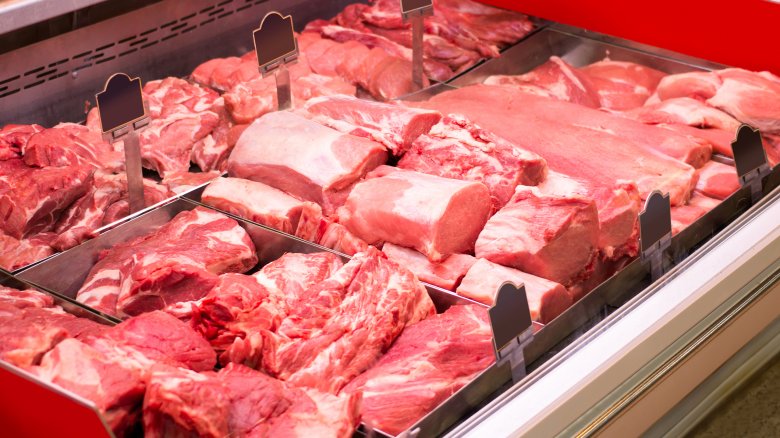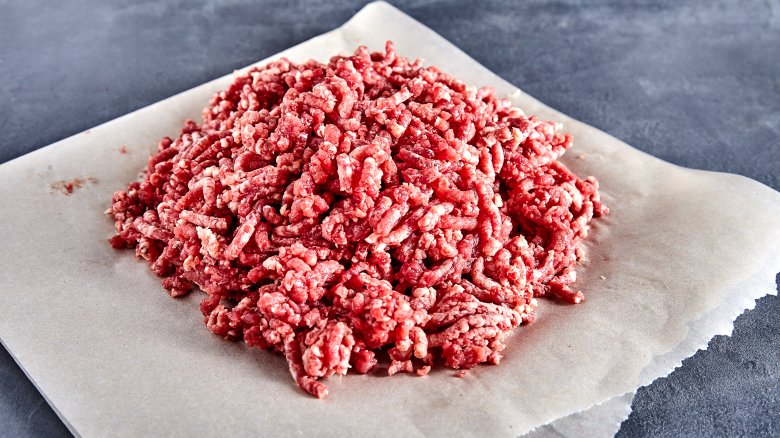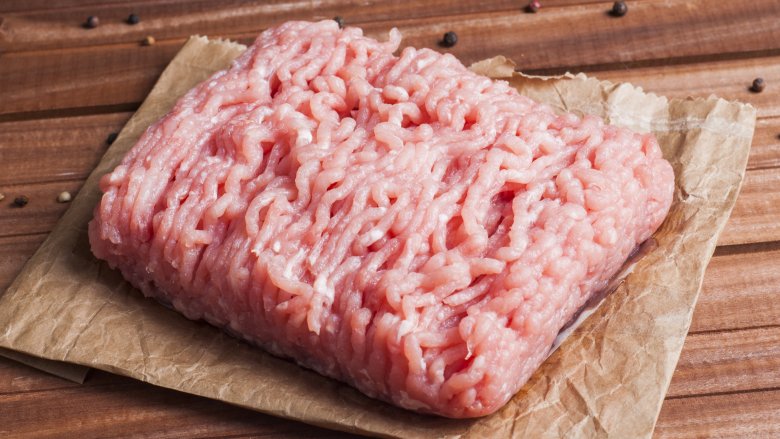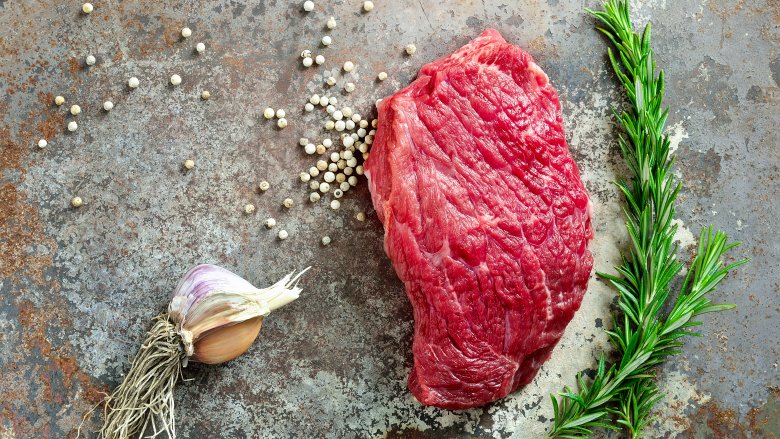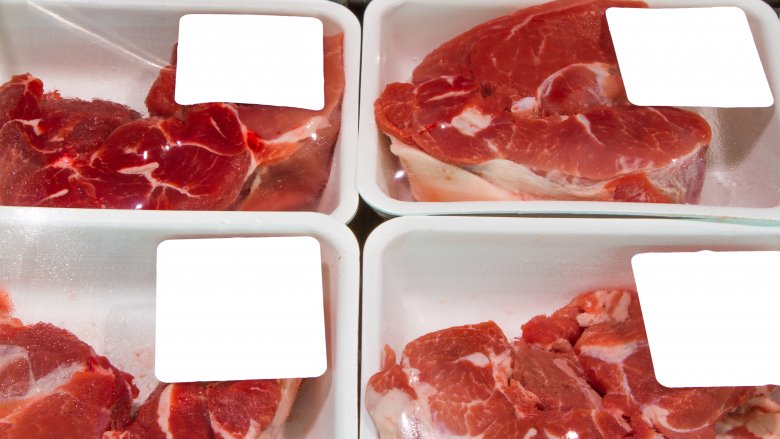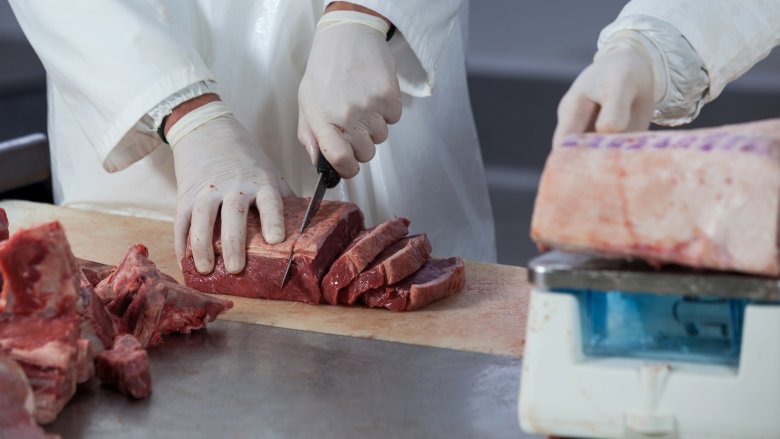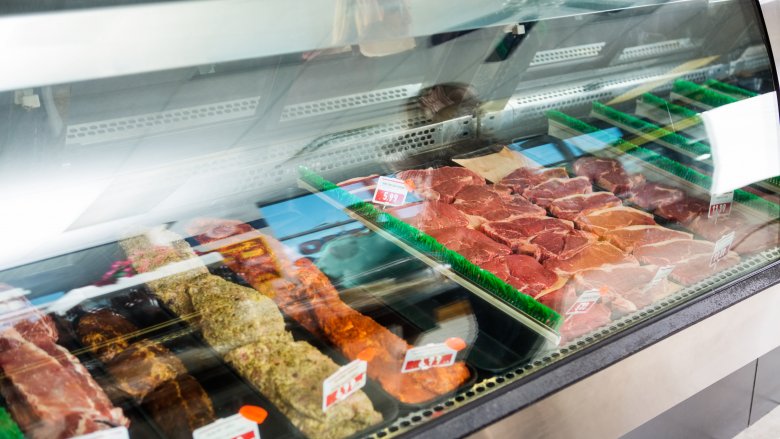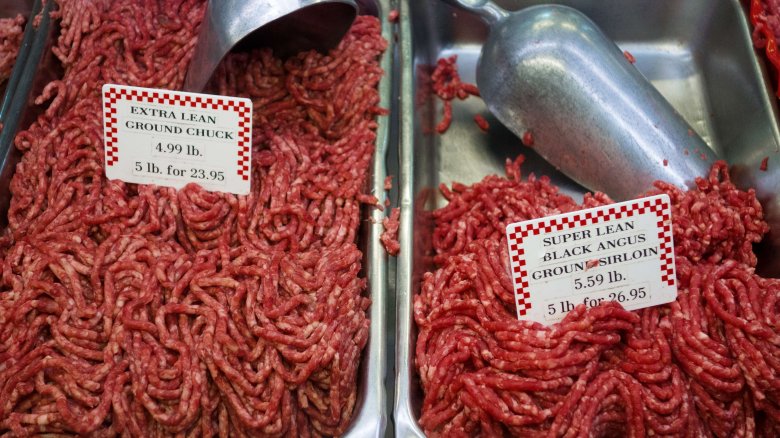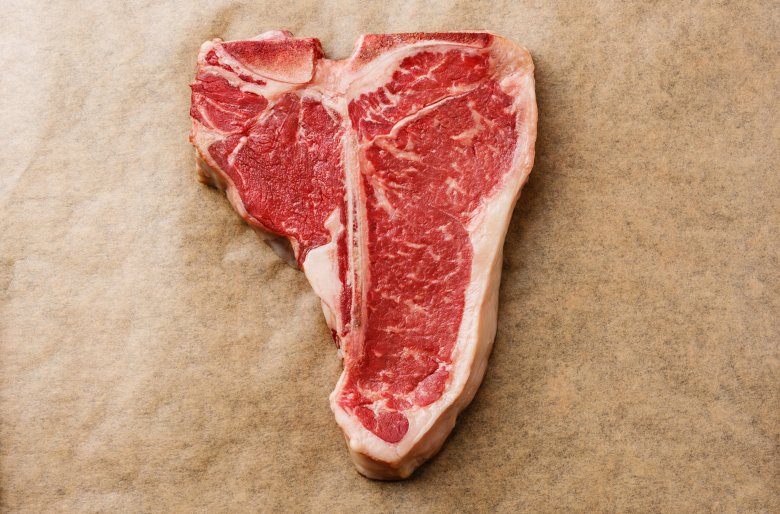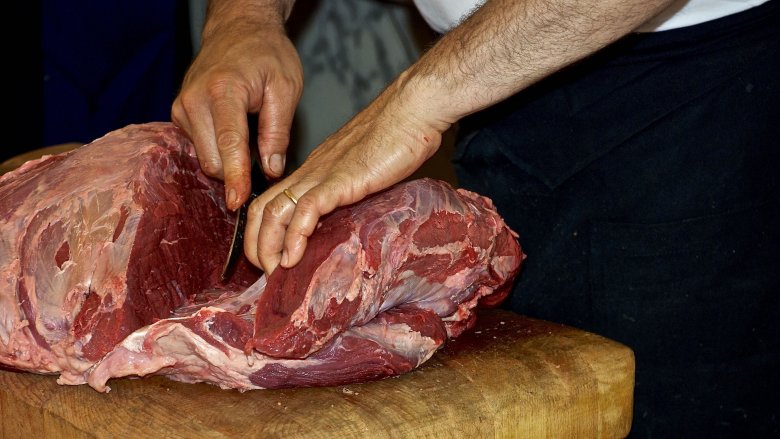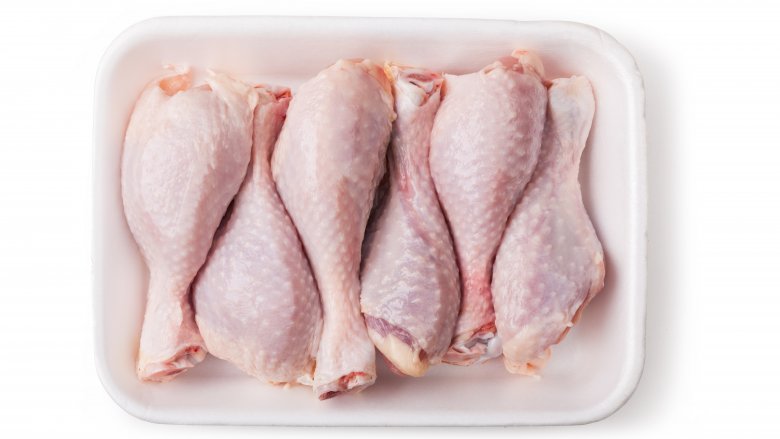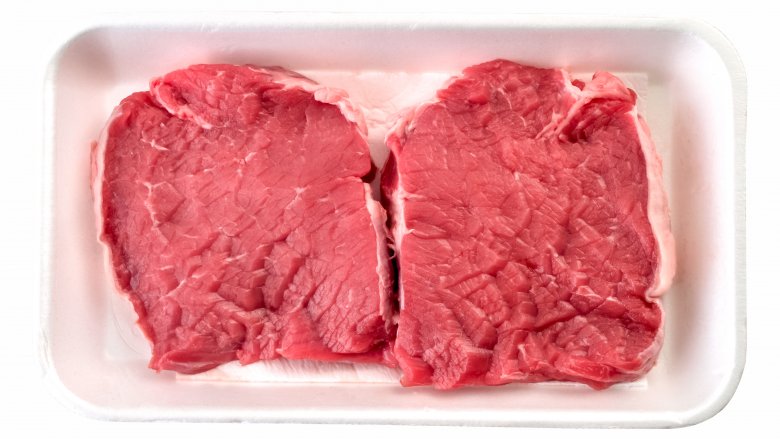The Surprising Truth Of Your Grocery Store's Butcher Counter
A well-stocked butcher counter is a meat-loving cook's paradise, full of endless possibilities. Restaurant-quality steaks, marbled rib roasts, free-range chicken — it's all there at your fingertips, ready to turn into the meal of your dreams. And since you're buying fresh meat, poultry, and seafood, you assume you're getting the best of the best. Unfortunately, if you dig a little deeper you might find some unsavory truths hiding behind that glass case.
But don't worry — it's not all bad. Once you get past the pesky poop-in-the-ground-beef situation, there are tips and tricks that can save you time and money (assuming you haven't decided to become a vegetarian in the wake of all your new-found knowledge). Even though some of these tidbits might be hard to swallow, here's what you need to know about the grocery store butcher counter.
There's probably poop in your ground beef
Thanks to a Consumer Reports investigation, we now know that just about all ground beef "contains bacteria that signifies fecal contamination." That's right, folks — poop. Of the 458 pounds of ground beef tested, not one test came back sans poop. And yes, sorry, that includes organic, grass-fed varieties. The introduction of the bacteria comes from the slaughtering process, where fecal matter can make its way from other parts of the cow to the carcass. This becomes an issue with ground beef (versus larger cuts of beef) because the bacteria gets incorporated throughout the meat, making it harder to cook to a high enough temperature to kill what might be lurking in the middle. So while a juicy rare burger might be your go-to order, you're likely getting a little more than you bargained for — and it's probably not the secret ingredient you were hoping to uncover.
And there's poop in your ground turkey
Because Consumer Reports apparently likes to dash all of our ground meat dreams, they've also got bad news about ground turkey. That's right — there's probably poop in your ground turkey, too. In their analysis, more than half the packages tested positive for fecal bacteria. But that's better than 100 percent (ahem, ground beef!), right?
That bright red beef may not be as fresh as you think
Packages of meat are often treated with carbon monoxide, which is used as a color stabilizer, to give beef that bright red, juicy appearance. Because this treatment can affect the meat for several weeks, the color should not be used as an indicator of freshness alone. Go by the sell-by date on the package (though you're about to learn some bad news about that, too), and trust your nose. A spoiled steak will smell horrible, even if it is bright red.
Expiration dates might not mean anything
One of the best places to score a bargain is the "manager's special" section at the butcher counter. But it turns out that those half-price packages expiring "today" might really mean "yesterday" or "last week." Because grocery stores often package their own meat, they're in control of the sell-by dates, and if they think a steak is still sellable after its date, they can give it a new one, just like that. Again, your nose is your friend when it comes to meat.
Butchers can be shady
According to one Redditor, who claims to be a butcher in a grocery store, there might be some shady practices going on in the meat department, and most of them will result in you spending more money. Here's what to watch for: "Stores will do everything from grinding ice in with the beef (to pump up the weight), try to put extra stuff on the scale, weigh the meat after it's packaged, or sell one cut of beef as something better." The moral of the story? Be extra nice to your butcher.
The meat might be misted with Windex
One Chowhound user has sworn off meat from their grocery store butcher counter for one reason: Windex. In this butcher counter horror story, the poster claims to have watched an employee lift the meat case open from the front and spray the inside of the glass with Windex, effectively misting all the fresh meat at the same time. Now whether or not a light sprinkle of Windex on your steak will do you harm is beside the point — I think we can all agree that we'd prefer our meat be free of blue cleaning solution.
"Angus" doesn't necessarily mean "better"
If you're making a beeline for the Angus beef because you think it's better quality, think again. The term "angus" has nothing to do with the grade of the meat — it's actually the breed of cow. To ensure that you're getting top quality beef, look for the USDA shield instead. This label indicates the meat grade of "prime," "choice," or "select." When you really want the good stuff, go for the prime.
You might be paying a lot more for the "fresh" seafood
Though you think you're buying fresh seafood at the butcher counter, it is usually previously frozen and defrosted (pay attention to the labels!). According to Phil Lempert, grocery industry expert, you can usually buy the same seafood in the frozen section for up to 40 percent less.
A whole lot of fish is mislabeled
Fish fraud is rampant nationwide. According to a report from ocean conservation advocacy organization Oceana, "seafood may be mislabeled as often as 26 to 87 percent of the time for commonly swapped fish such as grouper, cod and snapper, disguising fish that are less desirable, cheaper or more readily available." The study, which included grocery stores, shows the importance of asking questions and learning where your seafood is coming from. Some stores are now providing traceability, meaning they know exactly how the fish got from boat to butcher counter. One of the easiest ways to tell if your fish is fake? The price. If the fish is half the price of what it normally is, there's probably a reason.
There's a secret to getting cheap filet mignon
If you're craving a filet mignon but the price tag is holding you back, buy a T-bone steak instead. On one side of the bone is a perfectly delicious New York strip, and on the other side is a filet. You'll save up to $5 a pound with this butcher counter hack.
The butcher will do a lot for you
Another way to save some money on your grocery bill: buy larger cuts of meat and whole chickens, then ask the butcher to break it down for you. Often times the price per pound is much cheaper than buying meat that has already been processed.
You can also ask your butcher to debone or grind meat and tie up roasts. Some stores will even season meat and poultry with rubs. All you have to do is ask.
The chicken could make you sick
After a staggering 25 percent of chicken pieces were found to have salmonella bacteria, sickening an estimated one million people a year, the USDA has imposed new safety measures to reduce the bacteria in poultry. The new guidelines aim to reduce illnesses by 30 percent, which means there is still plenty of salmonella floating around out there. The best way to guard against the bacteria is to ensure chicken is cooked to an internal temperature of 165 degrees.
Your steaks might be mechanically tenderized
To make steaks more tender, raw beef is often run through a machine which pierces the meat with tiny needles. This process is called mechanical tenderization, and it is not required to be disclosed on the packaging. The problem with this process is that the needles can force bacteria inside the meat, and if you're a rare steak lover, this could pose a problem. Typically, any bacteria present on the meat surface will get killed in the cooking process, but if the internal temperature doesn't get high enough, any bacteria introduced in the tenderizing process could remain. You can't tell if meat has been mechanically tenderized by looking at it, so ask your butcher if you intend to have a bloody steak for dinner.
